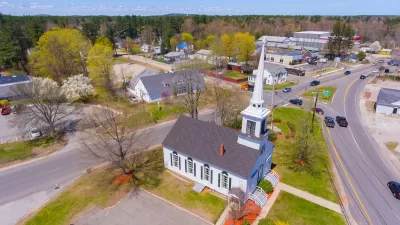The concept of "eyes on the street" is relevant to a wide variety of neighborhoods, not just the low-rise urban areas that Jane Jacobs wrote about.

Jane Jacobs wrote that urban neighborhoods were safer when there were "eyes on the street": that is, residents and shopkeepers who are naturally drawn to the life of the street, and who, in the course of their activities, monitor the street. Where there are no "eyes on the street" urban spaces are deserted and, thus, less likely to be safe.
When I think of "eyes on the street" I normally think of low-rise urban neighborhoods like New York's West Village (where Jacobs lived for many years). But this doesn't mean that eyes on the street exist only in such neighborhoods. For example, I live in New York’s Murray Hill, an area with many low-rise buildings but also many 10-20 story doorman buildings. Often, the doormen and staff of these buildings stand in front of the building, taking in street life and providing eyes on the street.
Eyes on the street can even exists in more suburban contexts. When I was in Houston's River Oaks (a rich, low-density, in-town neighborhood) I saw people walking in front yards, and lots of home repair and landscaping trucks parked in front of the sidewalks, thus providing a small number of eyes on the street. On the other hand, in the equally affluent area where my mother lives, hardly anyone walks. Why is River Oaks different?
In my mother’s area, the absence of sidewalks discourages walking, long driveways make it easy for workers to park far from the street, and the streets have no space for on-street parking. (For an example, go to Google Street View and look at 4099 Randall Mill Road in Atlanta). The long driveways are, I think, partially related to Atlanta's hilly terrain, but also related to the municipal code, which requires 60-foot setbacks in the lowest density zones (AtlantaCode, sec. 16-04.008).
By contrast, in some River Oaks blocks,* there is just enough street space for on-street parking, and driveways are smaller so workers park on the street. (For an example, look at 3238 Avalon Place in Houston.) If I read Houston's code correctly, Houston houses need only be 25 feet from the street, so driveways can be short (see HoustonCode, 42-156(a)).
So even in a suburban context, there can be a smattering of "eyes on the street," as long as zoning codes and street design rules facilitate on-street parking.
*Though not all. Other River Oaks blocks had huge yards, and workers' vehicles were invisible.

Manufactured Crisis: Losing the Nation’s Largest Source of Unsubsidized Affordable Housing
Manufactured housing communities have long been an affordable housing option for millions of people living in the U.S., but that affordability is disappearing rapidly. How did we get here?

Americans May Be Stuck — But Why?
Americans are moving a lot less than they once did, and that is a problem. While Yoni Applebaum, in his highly-publicized article Stuck, gets the reasons badly wrong, it's still important to ask: why are we moving so much less than before?

Using Old Oil and Gas Wells for Green Energy Storage
Penn State researchers have found that repurposing abandoned oil and gas wells for geothermal-assisted compressed-air energy storage can boost efficiency, reduce environmental risks, and support clean energy and job transitions.

Minneapolis Bans Rent-Setting Software
Four cities have enacted restrictions on algorithmic software that can inflate rent costs.

Oakland to Add 244 New EV Chargers
Oakland plans to launch its new charging network at eight locations by the end of 2025.

Jane Goodall Inspires with Message of Hope, Resilience, and Environmental Action
Speaking in Pasadena, Jane Goodall offered a hopeful and inspirational message, urging global compassion, environmental responsibility, and the power of individual action to shape a better future.
Urban Design for Planners 1: Software Tools
This six-course series explores essential urban design concepts using open source software and equips planners with the tools they need to participate fully in the urban design process.
Planning for Universal Design
Learn the tools for implementing Universal Design in planning regulations.
Heyer Gruel & Associates PA
City of Moreno Valley
Institute for Housing and Urban Development Studies (IHS)
City of Grandview
Harvard GSD Executive Education
Salt Lake City
NYU Wagner Graduate School of Public Service
City of Cambridge, Maryland






























